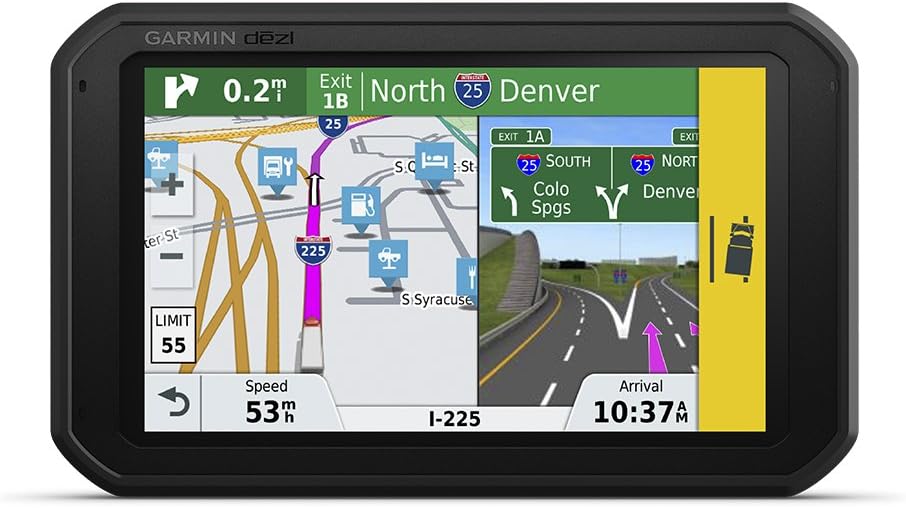Embarking on a road trip, especially in an RV, is an adventure filled with uncertainty. The roads, unpredictable and vast, hold surprises that can either enhance or hinder your journey. In the realm of RV travel, Garmin stands out as a reliable companion, offering advanced GPS technology tailored for larger vehicles. This article takes you through a comparative analysis of two prominent models, Garmin 780 vs 770, aiding you in making an informed decision on which GPS navigator to install for your RV expedition.
Why Embrace GPS Technology for Your RV?
In an era where maps seem ubiquitous, the question arises: why opt for a GPS in your RV? The answer lies in the evolving landscape of technology and the unique benefits that GPS offers to modern RV drivers.
1. Up-To-The-Minute Information
Maps, even the latest editions, fall short in providing real-time information. GPS technology goes beyond static maps by offering dynamic updates on traffic conditions. By connecting your GPS to Wi-Fi, you gain access to current traffic situations, ensuring a smoother and more informed journey.
2. Customized Routes for Your RV
RV GPS devices consider the unique dimensions and weight of your vehicle to suggest optimal routes. This customization ensures that you navigate roads suitable for bulkier vehicles, eliminating the uncertainties posed by traditional maps that might lead you astray into unsuitable terrains.
3. Simplified Navigation
Unlike traditional maps that require a co-pilot to assist with navigation, GPS devices simplify the process. Enter your destination, and the GPS takes the reins, guiding you through the route seamlessly. Garmin’s installation process adds to the ease, ensuring a hassle-free ride.
Now that the significance of RV GPS is clear, let’s delve into a detailed comparison between Garmin RV 770 and Garmin RV 780 to help you make an informed choice.
Common Ground: Similarities Between the 770 and 780
Understanding the shared features between the two models provides insights into what you can expect, regardless of the specific model you choose.
1. Active Lane Guidance
Designed specifically for larger vehicles like RVs and trucks, both Garmin 770 and 780 offer Active Lane Guidance. This feature suggests routes conducive to easy maneuverability based on entered height, width, and weight of the RV. It goes beyond conventional GPS navigation by recommending specific lanes for a smoother journey.
2. Free Map and Traffic Updates
Both models provide a lifetime subscription to free map updates and real-time traffic information. By connecting to Wi-Fi, users can effortlessly download the latest maps. The embedded receivers in the power cable ensure continuous access to up-to-date traffic situations, a feature that sets Garmin apart from cheaper alternatives.
3. Bluetooth Connectivity
The ability of both models to connect seamlessly with smartphones via Bluetooth adds to their versatility. This feature allows hands-free calling and notification access while maintaining focus on the road. Moreover, connecting the GPS to a Bluetooth-enabled stereo system enables voice commands.
4. Reverse Parking Assistance
If your RV is equipped with a rear-view camera, both models facilitate a streamlined experience by integrating it with the GPS system. This integration eliminates the need for an additional screen when parking in reverse, enhancing convenience.
5. Touchscreen Controls
Capacitive touchscreens grace both Garmin models, offering intuitive and user-friendly controls. This feature allows users to access device functions with a simple touch, complementing voice commands when needed.
6. Power Source
Powered by built-in lithium-ion batteries, both devices provide approximately an hour of usage when fully charged. While the batteries may not be a primary power source when the GPS is plugged into the vehicle, they prove useful when Wi-Fi access is required away from the RV.
7. RV Waypoints
Both Garmin 770 and 780 cater to the uncertainties of RV travel by offering a directory of over 20,000 RV parks, charging spots, gas stations, and more across North America. Additionally, users can access Foursquare and TripAdvisor databases to explore reviews and ratings of nearby restaurants.
Unveiling Distinctions: Differences Between the 770 and 780
While the commonalities paint a comprehensive picture, recognizing the differences is crucial for a nuanced decision-making process.
1. Price Point
The Garmin dezl 780 LMT-S Advanced GPS for RVs is positioned as a premium navigator, available at $399.99 on the official website. It offers an affordable option for larger RVs, and a 5-inch version is available at $299.99 for those with smaller vehicles.
On the other hand, the Garmin RV 770 NA LMT-S GPS, priced at $299.99, provides a more budget-friendly alternative. The 7-inch version is the sole option available for this model.
2. Smartwatch Compatibility
Garmin 770 takes the lead in smartwatch compatibility. If you own a Garmin Smart Watch, it can seamlessly connect with the Garmin 770. This integration allows for navigation assistance and real-time traffic updates directly on your smartwatch, serving as an added convenience during camping or trekking activities.
Regrettably, the Garmin 780 does not offer smartwatch compatibility, making this feature exclusive to the 770.
3. 3D Map Viewing
Enhancing the map-viewing experience, the Garmin 780 introduces 3D maps. Departing from traditional 2D maps with intersecting lines, the 3D feature offers a more interactive and visually engaging representation of elevations and terrain. This addition aims to provide a clearer understanding of the road ahead, elevating the navigation experience.
It’s important to note that the screen ratio of both models differs, contributing to a varied appearance while maintaining consistency in resolution and purpose.
Honest Review: Garmin Dēzl 780 LMT-S Truck GPS
To gain a deeper understanding of the Garmin 780, a premium offering in the lineup, let’s explore an honest review. This firsthand account can provide valuable insights into the user experience, performance, and any standout features that distinguish it from the 770.
[Include an honest review section with personal opinions and experiences.]
Conclusion: Navigating Your Decision
In conclusion, the decision between Garmin 780 vs 770 hinges on your specific needs, preferences, and budget considerations. While the 780 introduces advanced features such as 3D map viewing, the 770 remains a reliable and cost-effective choice. The inclusion of smartwatch compatibility in the 770 caters to users who value seamless integration with wearable devices.
Consider the following factors when making your decision:
- Budget: The Garmin 770 offers a more budget-friendly option, presenting a cost savings of $100 compared to the 7-inch version of the 780. Evaluate your budget constraints to make an informed choice.
- Smartwatch Integration: If you own a Garmin Smart Watch and value the convenience of receiving navigation assistance on your wrist, the 770’s smartwatch compatibility may be a compelling feature.
- 3D Map Viewing: If a more interactive and visually engaging map-viewing experience is a priority, the Garmin 780’s introduction of 3D maps could be a deciding factor.
- Frequency of Use: Consider how often you engage in trekking and camping activities. Smartwatch compatibility becomes more relevant for those who frequently embark on such adventures.
Your decision should align with your unique preferences, ensuring that the

